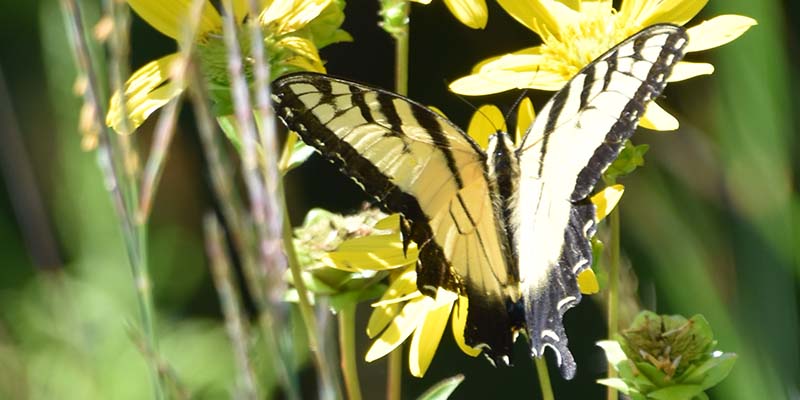
In 2019, the state of Ohio passed a bill designating April as “Ohio Native Plant Month,” to increase public awareness of Ohio’s native plants and the benefits they provide to pollinators, Ohio’s economy, and the health of the environment.
By incorporating native plants in our urban landscape, we can help maintain biodiversity and sustain our ecosystem.
But what exactly is a native plant? They are plants that were here before European settlement of North America in 1565. These plants evolved in different regions and are a part of each region’s complex ecosystem. Removing native plants from our landscape disrupts that ecosystem and affects birds, insects, animals, and other plant species.
As the continent was settled, plants were transported from around the world as food sources or for ornamental purposes. Many of those plants became invasive due to their easy spread and not serving as a food source for local wildlife.
One intrusive non-native species that’s prevalent here in Mentor is the Garlic Mustard plant. Garlic Mustard was introduced to North America for its herbal and medicinal qualities. The incredibly hearty plant can self-pollinate, produces many seeds, and grows in shade or full sun. Because it is non-native, the insects and diseases that control the plant’s population aren’t present, so it spreads unabated. The only way to control the spread is by using an herbicide or pulling it up and disposing it in a plastic bag (composting will sow seeds and continue the spread).
By using native plants in our landscape, we reduce the threat of invasive plants to Mentor’s unique ecosystem while supporting pollinators, birds, insects and other wildlife. It is a delicate balance that needs to be preserved.
A major benefit to using a native plant is that they are usually easier to grow. Many are drought tolerant and need less care and maintenance.
In the Mentor area we are fortunate to have organizations dedicated to the promotion and preservation of native plants.
The Native Plant Society of Northeastern Ohio’s mission is to promote the study, appreciation, and conservation, of Ohio’s native plants and plant communities.
The Lake Erie Allegheny Partnership for Biodiversity (or LEAP) is a consortium of organizations, including government agencies, universities, research centers and conservation organizations to enhance the biodiversity of our habitats and ecosystems. The Partnership works to identify, protect and restore ecosystems and habitats in the region. The City of Mentor is a member.
Individuals can join the Native Plant Society while non-profits, universities, agencies and park districts can become members of LEAP. Both organizations offer valuable educational opportunities to learn about native plants. You can find out about becoming a member and learn about the importance of native plants, how to landscape using native plants, and more, by visiting the Native Plant Society of Northeastern Ohio’s website at nativeplantsocietyneo.squarespace.com.
Every year, LEAP designates native plants of the year. In 2020 those included Purple-flowering Raspberry, Scarlet Bee Balm, and the Wafer Ash tree.
Fact sheets detailing hardiness zones, bloom time and uses is available at www.leapbio.org. The site also includes a Native Plants Nurseries Map making it easy to find and buy plants native to our region.
Often when we purchase a home, we inherit the landscaping it came with. Incorporating native plants into your landscape and replacing invasive or nonnative plants can be done over a period of years. Start small and replace or plant with natives based on the growing conditions that are found to your yard (soil type, shade or sun). Native plants enhance and create a lovely landscape and support our region’s unique ecosystem.
